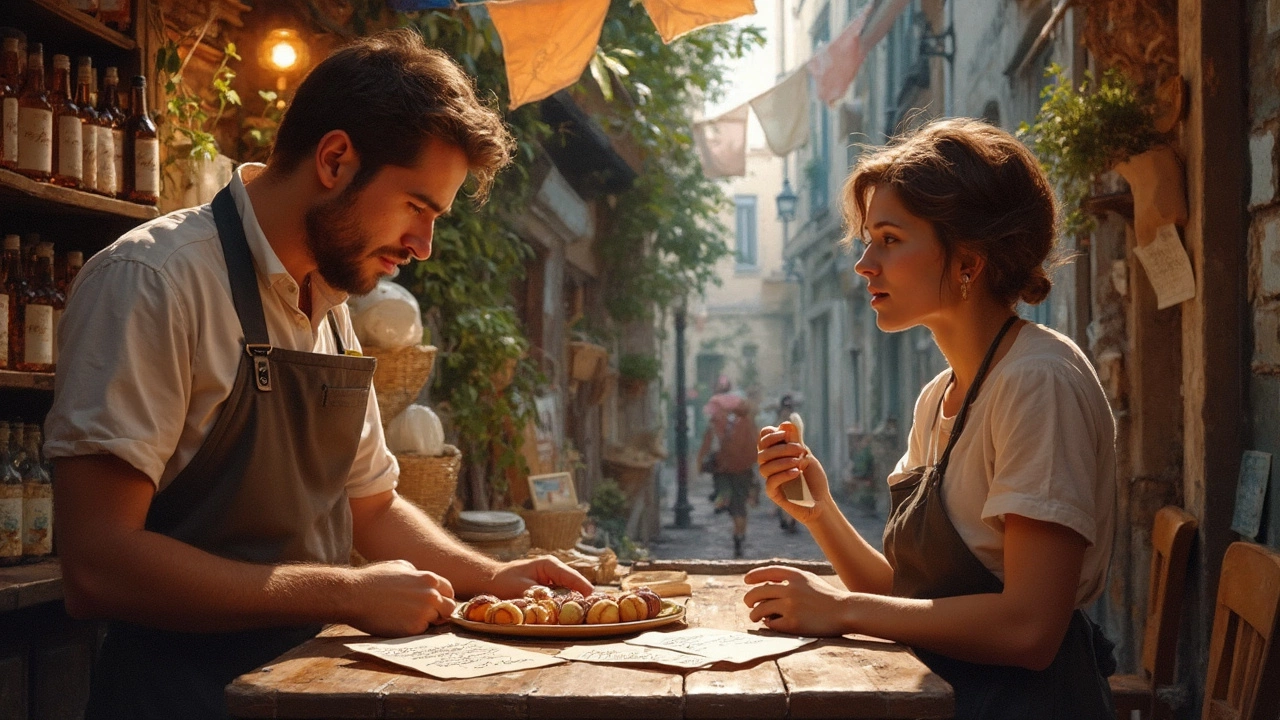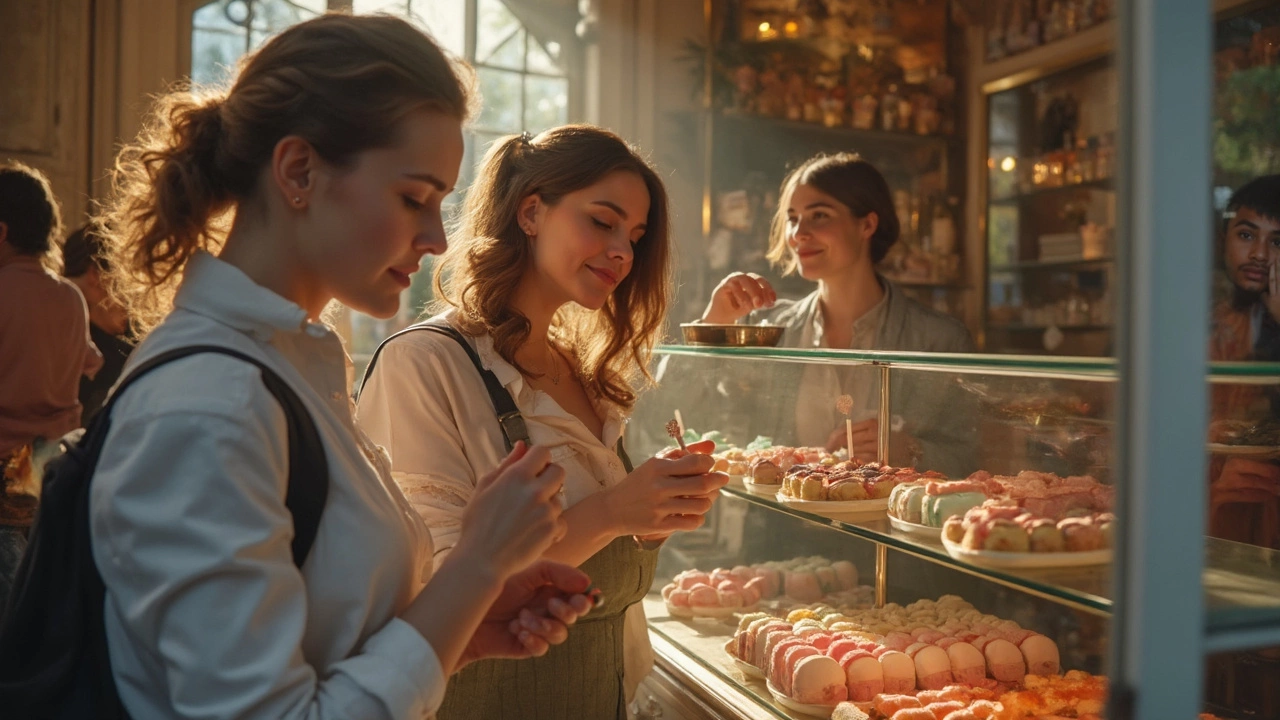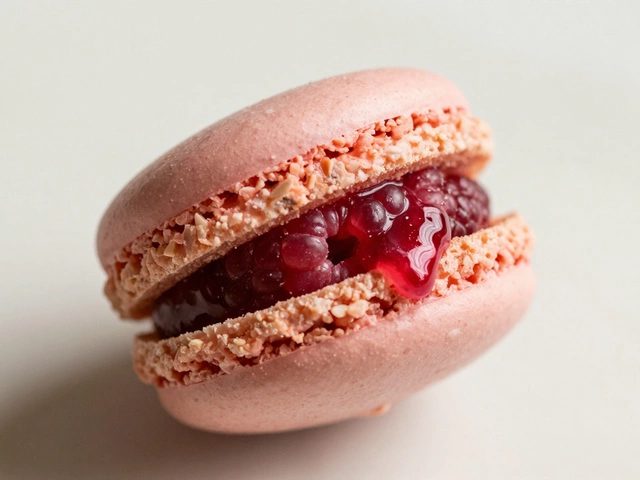If you ever find yourself in France, skipping macarons is like skipping the Eiffel Tower. This sweet treat isn’t just a dessert—it’s a national obsession, sitting in windows from Paris to little villages nobody puts on a postcard.
But you probably noticed quickly: some shops have lines out the door, others don’t even get a second glance. There’s real difference between a chewy, airy, flavor-packed macaron and the ones that are just pastel hockey pucks. So, how do you know where to go and what to look for?
France is packed with both world-famous bakeries and tiny local spots that have their own die-hard followings. Some places make macarons so crispy on the outside and creamy on the inside, you’ll start comparing everything else in life to them. I’ve tasted my way around the country, talked to locals, and found that there’s a bit more to finding the best macaron than just Googling “top pastry shop.”
- Why France Is Macaron Heaven
- Top Iconic Macaron Shops
- Local Favorites Off the Beaten Path
- Macaron Tips and Sweet Surprises
Why France Is Macaron Heaven
The first thing to know: macaroons (or “macarons” in French) didn’t get popular by accident. France has been obsessed with these colorful bites for centuries. Stories say Catherine de’ Medici brought a version of them from Italy in the 1500s, but it wasn’t until Parisian pastry chefs started stuffing them with creamy ganache in the 20th century that things really took off. These days, French folks eat millions a year—especially during celebrations like Easter and fancy weddings.
What makes France different? It’s about standards and old-school pastry know-how. Macarons here need to have that perfect balance: crispy shell, chewy middle, and a bold flavor that doesn’t taste artificial. Many shops, even in small towns, use almond flour, aged egg whites (really!), and small-batch fillings. Some bakeries guard their recipes like family gold. Even locals have favorite bakeries and secret shopping tips.
"A real French macaron should be crisp on the outside, melting on the inside, with a taste that’s never boring or too sweet." — Pierre Hermé, world-renowned pastry chef
If you love numbers, it’s wild: one single Parisian chain, Ladurée, sells more than 15,000 macarons per day just in their Champs-Élysées shop. Macron sales even spike up to 40% in France during the spring months, right before wedding season.
| Year | Macarons sold in France (millions) |
|---|---|
| 2015 | 120 |
| 2020 | 160 |
| 2024 | 200 |
France also gets playful with flavors. Sure, you’ll see classic pistachio, chocolate, and vanilla everywhere, but try to find shops offering salted butter caramel, rose, passion fruit, or even matcha. There’s real pressure to keep pushing flavor boundaries—French customers expect to be surprised.
Bottom line? Nowhere else takes these treats so seriously, and nowhere else bakes them with quite the same attitude. If you’re in France and skip them, you’re missing a huge part of daily life here.
Top Iconic Macaron Shops
If you ask locals or even tourists, there are a few places that always pop up in conversation for the macaroons (and yes, French people care about spelling, but everyone calls them macarons). These bakeries don’t just serve treats—they pretty much shape what everyone else tries to copy.
- Ladurée: This name is basically macaron royalty. Their Champs-Élysées shop is often packed, and yeah, they claim to have invented the double-decker macaron back in 1930. Expect classics like pistachio, salted caramel, and rose—plus fancy seasonal flavors you won’t see anywhere else.
- Pierre Hermé: Some Paris folks swear by Pierre Hermé instead. This chef has been called the 'Picasso of Pastry,' and his flavor combos can get wild—think passionfruit and chocolate, or even olive oil and vanilla. Their Paris locations are super stylish, and the staff is used to people Instagramming straight from the counter.
- Dalloyau: One of the oldest players, Dalloyau goes back to the 1600s. They do a killer classic macaron and are known for being super consistent. Locations are mostly in Paris, but you’ll spot a few in other big cities.
- Fauchon: If you want to feel like you’re in a spy movie—you know, polished counters and pink boxes—Fauchon has you covered. These guys are famous for using top-notch ingredients and for their playful new flavors.
Here’s a quick look at what some of these shops offer each year, just to get an idea of how big the macaron game really is:
| Shop Name | YearEstablished | Flavors Offered (approx.) | Locations in France |
|---|---|---|---|
| Ladurée | 1862 | 15-25 (rotating) | 20+ |
| Pierre Hermé | 1998 | 15-30 (custom blends) | ~10 |
| Dalloyau | 1682 | 12-18 | 15 |
| Fauchon | 1886 | 10-15 | 6+ |
One tip: the flagship shops usually have the widest macaron selection but also the highest prices. If you’re on a budget or the main boutiques are packed, check their smaller locations. You’ll get the same sweets, shorter lines, and sometimes, better service.

Local Favorites Off the Beaten Path
When you wander outside the big cities and famous pastry shops, France gets seriously interesting for macaroons. Locals everywhere have their own secrets and quirks, and they’ll argue for their hometown macaron recipes like it’s a soccer match.
Let’s talk about a few real favorites. In Nancy, you’ll find Maison des Sœurs Macarons—known for its old-school recipe, these macarons are chewier, a bit rustic, and have been around since 1793 at the same address. Locals swear they taste like real almonds, and you get a dose of history with every bite.
If you travel to Saint-Émilion, the small, charming macaron kiosk by Nadia Fermigier uses a recipe that hasn’t changed since 1620. You won’t find rainbow colors or buttercream inside—just simple, sweet almond paste. It’s a nice break from the super-sweet flavors you get in bigger cities.
Heading over to the Basque country, Maison Adam in Saint-Jean-de-Luz has been serving up macarons since 1660. Their style is totally different—crusty tops, soft insides, and loaded with almonds. It’s a must-try if you like your macarons a little rustic and less sugary. The same place has been run by the same family for 13 generations. Crazy, right?
If you’re more of a city explorer, try Sadaharu Aoki in Paris, tucked inside a quiet street. This spot’s not your usual tourist magnet. The owner blends Japanese flavors—think matcha and yuzu—into traditional French macarons. Locals love it for the fresh twist.
- Look for local outdoor markets—many villages have a weekend bakery stall selling homemade macarons you won’t see on Instagram.
- Try to visit bakeries in the morning, since that’s when everything is the freshest.
- Ask for the shop’s specialty or “recette traditionnelle”—it usually means you’ll get something unique to the region.
Getting off the beaten path isn’t just fun, it’s where you actually find the best bites. Often, these places don’t show up on TripAdvisor or flashy Paris food blogs—they’re loved by people who live right around the corner. Just trust your taste buds and don’t be afraid to try smaller shops—you might end up with a new favorite.
Macaron Tips and Sweet Surprises
Here’s one thing people get wrong: all macaroons in France are not created equal. A good macaron has a crisp shell that gives to a chewy-but-not-sticky center—no dryness, no soggy spots. You want flavors that make you pause, not wonder what you just ate. If you see the pastry chef’s name by the window, that’s usually a good sign.
Want to avoid tourist letdowns? Go early in the day. Fresh macarons almost melt in your mouth, and the morning batch is where it’s at. If you see plain pistachio or vanilla sold out first, that’s a hint locals are shopping there, too. Ask what’s seasonal—French patisseries bring out special flavors for things like raspberry season or Christmas. You’ll find stuff you’d never get at home, like chestnut, yuzu, or even lavender honey.
- If a macaron crumbles all over your shirt as soon as you bite, it’s probably too old.
- Patisseries like Pierre Hermé sometimes offer tasting boxes. Great if you like options or can’t decide, but skip giant gift packs from souvenir shops—they tend to sit on shelves too long.
- Prices vary. In Paris, expect to pay €2 to €3 for a single top-quality piece. Outside the big cities, you might find local bakeries selling them for half that, and often just as dreamy.
- Don’t refrigerate macarons unless you absolutely have to; the fridge will mess with the texture. Eat the fresh ones within 2-3 days for that perfect balance. Traveling home? They’ll survive the flight if you get them in a proper gift box and keep them level in your bag.
Still wondering what flavors are most popular? Here’s what French pastry fans pick again and again:
| Flavor | Why People Love It |
|---|---|
| Pistachio | Nutty, rich, never too sweet; French classic. |
| Raspberry | Tart and bright, perfect balance with sweet meringue. |
| Salted Caramel | The sweet-salty combo is addictive in macaron form. |
| Chocolate | Smooth, deep cocoa – like a fancy brownie as a macaron. |
| Lemon | Crisp and zesty, totally refreshing after a big meal. |
Some shops will even let you watch the pastry chefs work—worth it if you can, especially in places like Pierre Hermé’s flagship in Paris or at Fauchon. A few patisseries run workshops if you want to try making your own. Don’t expect it to look pro on your first go, but it’s way more fun than just grabbing a box to go.




